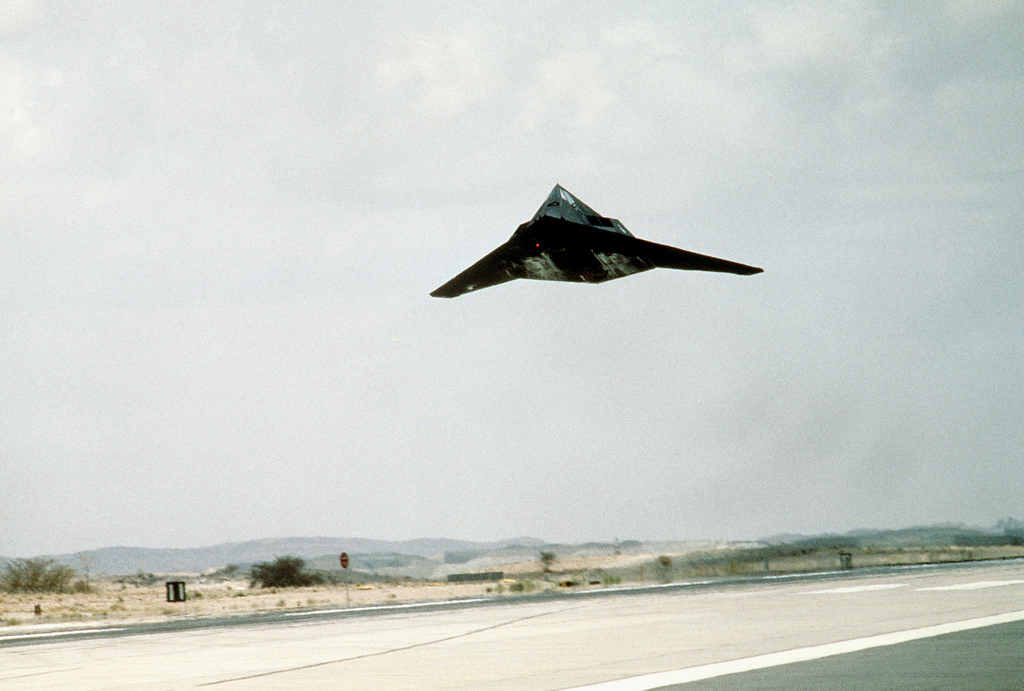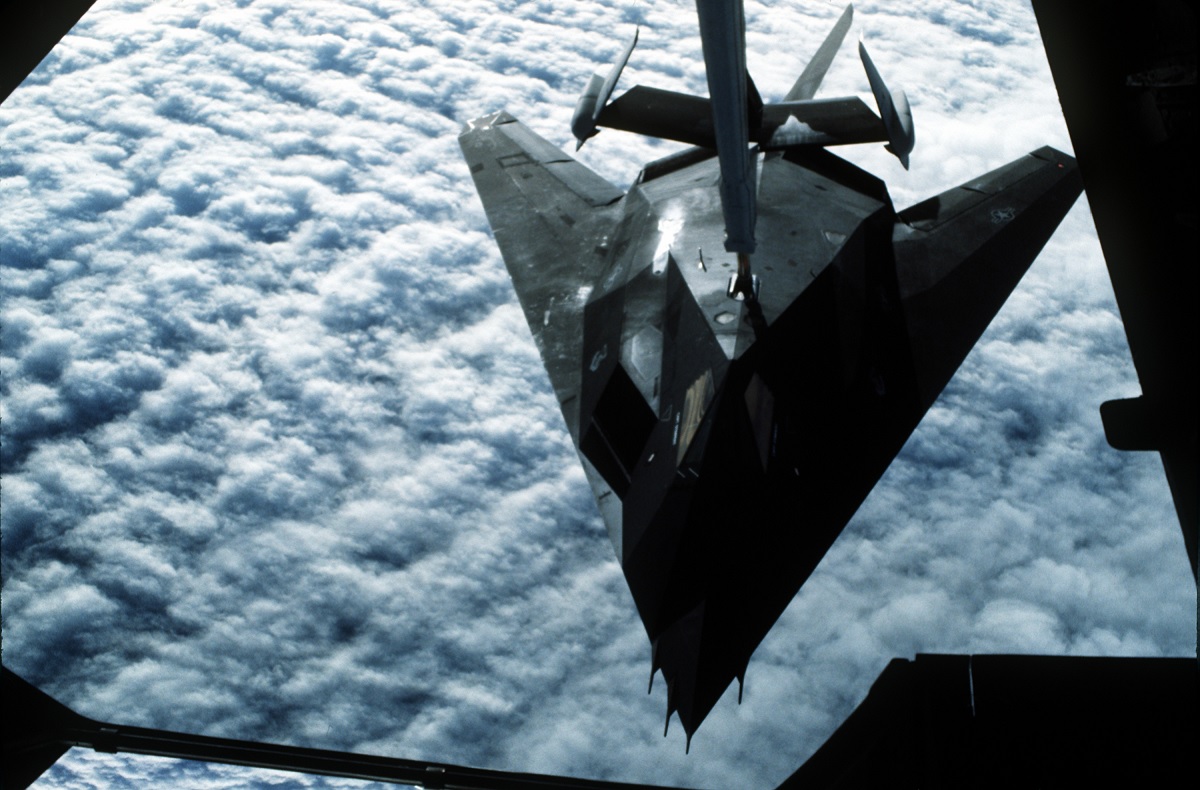“There was AAA everywhere, and I could see these big white puffs and red ropes getting closer and closer. They were gaining on me every second, and were now only 25-30 ft off my wing…” Capt James R Mastny, former F-117 Pilot
The USAF’s Have Blue program, which began in the middle of the 1970s, produced the F-1 17, which was created by Lockheed’s illustrious Advanced Development Company. The first of 59 production aircraft, equipped with Stealth technology that rendered the jet almost invisible to radar, was handed over to the USAF in August 1982.

Midway through 1990, the 37th Tactical Fighter Wing (TFW) made a major deployment to Saudi Arabia as part of Operation Desert Shield in reaction to Iraq’s invasion of Kuwait. This was the last Nighthawk to be delivered to the USAF. Later, in January 1991, F-117s took control of Operation Desert Storm’s initial strikes.
By the conclusion of the first day of Desert Storm, it was clear that the F-117s were invisible to Iraqi radar. However, the locations that had survived the initial assault that signaled the beginning of the aerial campaign were making every effort to assist in the downing of a Nighthawk. Since no other returns were obtained, radar operators suspected that USAF tankers in orbit over the Saudi border were refueling the F-117s.
The Iraqis believed the “invisible” bombers had entered their airspace when the tankers turned away. According to Capt. James R. Mastny (Bandit No 268) in Warren Thompson’s book F-117 Stealth Fighter Units of Operation Desert Storm, calculated the time between that occurrence and the first bombs landing on Baghdad to determine when they should begin firing in the hopes of striking something.
`During the first couple of days of the war, when we were sending wave after wave of Nighthawks over downtown Baghdad, the Iraqis still had enough early warning radars in operation to see the tankers because we were refueling only 45 miles south of the border. Once we had topped off our tanks, we had a strict time over target, which usually meant we would go straight there from the tanker. They could detect us while we were on the tanker, but when we broke and completely stealthed up, we were invisible.’
`During the first 48 hours of the war the Iraqi radar controllers must have figured out our target times, for all of a sudden, while we were lining our aim points up on the third night, all hell broke loose. They began firing everything they had straight up in the air. On earlier missions the firing didn’t start until the first bombs exploded, so we knew they couldn’t detect us.’

The first time this occurred, the pilots alerted their intelligence personnel, and a new strategy—targeting Iraqi assets outside of Baghdad—was developed. The sky lit up exactly when the Iraqis thought the F-117s were flying over the city, although there were no Nighthawks nearby. The pilots of the 37th TFW(P) never again flew to Baghdad in a straight line after demonstrating that the Iraqis were exploiting flight timings to target the stealth fighters. This resulted in a large difference in their arrival times at their targets, which appropriately perplexed the Iraqi defenders. While some waves focused on places outside the capital, others attacked targets inside the city.
The Nighthawks needed to maintain an unpredictable behavior in order to escape the nightly AAA firestorm above Baghdad. The sheer number of tracers being fired blindly into the night sky caused the stealth pilots to have multiple close calls even after altering their tactics. Capt. Mastny was one of those who believed that during an early mission over Baghdad, his number had come up.
`There was no way to describe the intensity of the fire coming up from the ground. They had an endless supply of ammunition. One night I was more scared than any of the others. I thought this was when I was going to be hit and have to bail out. Moments earlier, I had put my bombs on the targets, and I was now leaving the city with my throttle wide open.’
`By leaning forward in the seat, you could get a pretty good view to the rear. As I was looking back over the sweep of my left wing, I saw the sky light up soon after my bombs had hit the target. There was AAA everywhere, and I could see these big white puffs and red ropes getting closer and closer. They were gaining on me every second and were now only 25-30 ft off my wing. I believe the gunners were tracking me by the sound of my engines — they were doing a very good job of it, but I doubt that they had radar-guided guns. They either caught a glimpse of my aircraft or were shooting at the sound. Just about the time figured I was going to take one, I evidently went out of range, and it aII drifted behind me. If they’d had bigger guns, I think they’d have ailed me.’
‘My biggest fear was not dying but being captured. The enemy would have given anything to get their hands on an F-117 pilot. The flak I saw on that mission was just about every color you could imagine — red, yellow, green, and white.’

F-117 Stealth Fighter Units of Operation Desert Storm is published by Osprey Publishing and is available to order here.
Photo by U.S. Air Force

